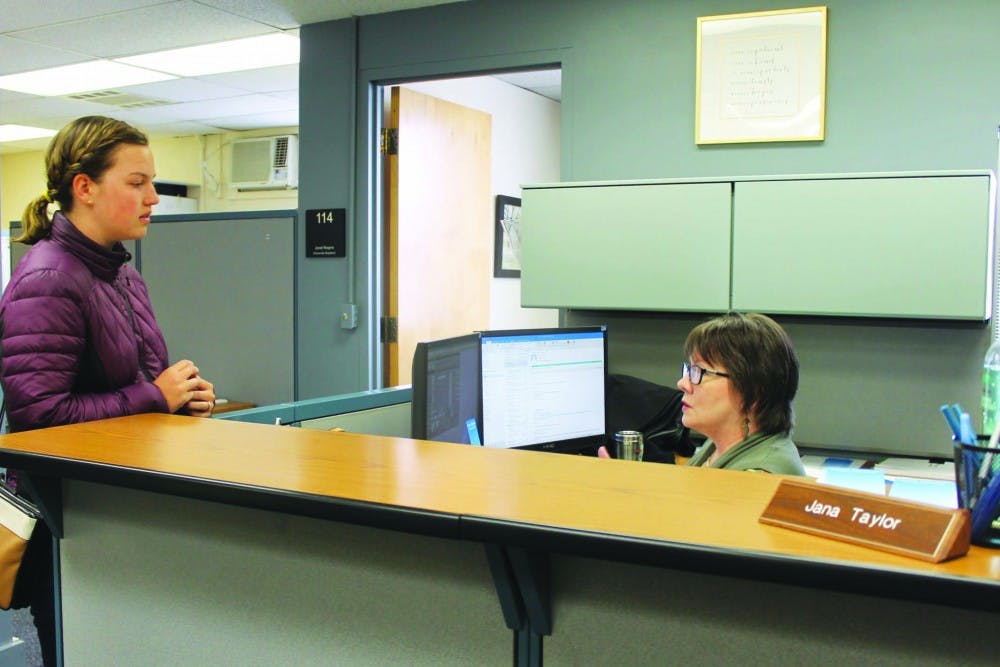By Hope Bolinger | Contributor
At least $1.48 trillion has been borrowed on a national level so far for 2018, according to Student Loan Hero. A total of 44 million people are in debt across the country.
To bring this to Upland, according to Financial Aid Counselor Lyn Kline, 61 percent of Taylor students take out loans and owe an average of $24,500 on subsidized and unsubsidized loans at the end of four years. Students can take out $2,000 in unsubsidized, and subsidized (subsidized are only for students with financial need; unsubsidized do not require students to demonstrate financial need) rates vary based on year: $3,500 (freshman), $4,500 (sophomore), $5,500 (junior and senior years). The interest on these loans is about $7 per month according to Kline, a little under an hour's worth of extra work to pay off the interest.
"The expense of an education is increasing faster than the rate of inflation," said Professor of Economics Hadley Mitchell. "So what this means is that loans for many students are getting larger."
But writer of the Student Loan Hero report Rebecca Safier didn't just observe the numbers in the national poll in the article titled: "Survey: Majority of Student Loan Borrowers Don't Know How Interest or Forgiveness Works." Instead, what caught her interest was that large percentages of the 1,019 adult survey participants misunderstood aspects of the student loan process.
For instance, according to those she polled, 52 percent of students who borrowed did not know interest on unsubsidized loans continued to build while they attended school.
"In other words, more than half of student loan borrowers don't realize they will graduate with a bigger balance than they took out (if they haven't started making payments while in school)," Safier said. "This misunderstanding could leave students unprepared to deal with their student loan bills once the grace period ends and repayment begins."
The report also claims one in every 10 students believed they didn't have to pay back the loans if they could not obtain a job after college. Furthermore, one-third of those surveyed did not understand the logistics of credit scores and co-signers.
Kline agrees that students should be knowledgeable about loans, as the Taylor University Financial Aid Office requires students to take entrance counseling prior to taking out loans. This session walks borrowers through various logistics and questions they need to understand before taking out loans.
"I'm willing to meet with any student who has questions (about) loans," Kline said. "I meet with students quite a bit this time of year. I want students to understand that while loans are helping you at Taylor, we want to be responsible in borrowing and knowing how much is too much."
One way for a Taylor student to know if it's too much is to gauge how much they will make in their first post-graduate year. If they plan to make $25,000, then they can take out that much in loans.
Kline found some elements of the Student Hero Report to be either misconstrued or confusing.
For instance, the report uses an outlier example of a heavy $9,500 loan with a fixed 4.45 percent interest, but most students would not be able to acquire such a loan unless their government denied their parent a parent loan (not a typical phenomenon). She also found the fact that one in 10 students were unaware they had to pay back student loans if they didn't obtain a post-graduation job a bit unconvincing.
"I've never heard of a student who has come in here and said, 'I took out a loan and didn't realize I needed to repay it,'" Kline said.
In addition to receiving advice or entrance counseling from the Financial Aid Office, Taylor students can seek other ways to offset the debt.
Mitchell says some ways students currently attempt to offset such payments are through working 10-20 hour weeks at a part-time job and watching expenses on unneeded items.
Alumna Jessica Wise ('17) agrees with the latter suggestion.
"There were definitely some things I spent money on in college that I definitely didn't need or the money would be better used for student loans," Wise said.
She also would have advised herself to pay off some of the loans during her college years, allocating $50 a month that she made working toward the bill.
In addition, Mitchell suggests taking a gap year or two to gain field experience or to save money to pay off the loans while in school.
"Maybe spread the education out over eight to 10 years, and walk away from the school with not only a diploma, but no debt," Mitchell said.
The full Student Loan Hero report can be read at studentloanhero.com.





